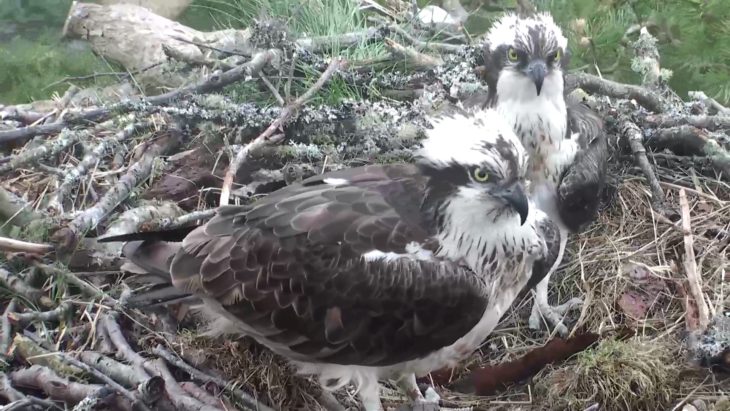The Case of the Disappearing Ospreys
Our osprey pair are becoming so in sync they have perfected a blink-and-you-miss-it changeover on the nest. Not content with handing over responsibility for the eggs while both on the nest, they are now mixing it up Houdini-style.

Off comes one bird without warning and disappears in a flash while up comes the other from behind the tree and, hey presto, changeover completed.
Gone are the days when an observer can calmly note the time of the change and check the sex of the bird on the eggs. You’ve got to keep your wits about you or you’ll find yourself scratching your head and asking how on earth the male transformed into the female before your very eyes.
When you consider that there is no apparent signal between the two, you have to wonder at the coordination and trust needed for this to happen.
Paul – Species Protection Officer
Did you know…?
Male ospreys breeding in Scotland spend 20-35% of daylight hours on the nest helping with incubation of the eggs. The female always takes the nightshift (Dennis, 2008).
Dennis, R. (2008) A Life of Ospreys. Whittles Publishing.
Help protect Scotland’s wildlife
Our work to save Scotland’s wildlife is made possible thanks to the generosity of our members and supporters.
Join today from just £3 a month to help protect the species you love.
Preface
Our osprey pair are becoming so in sync they have perfected a blink-and-you-miss-it changeover on the nest. Not content with handing over responsibility for the eggs while both on the nest, …
